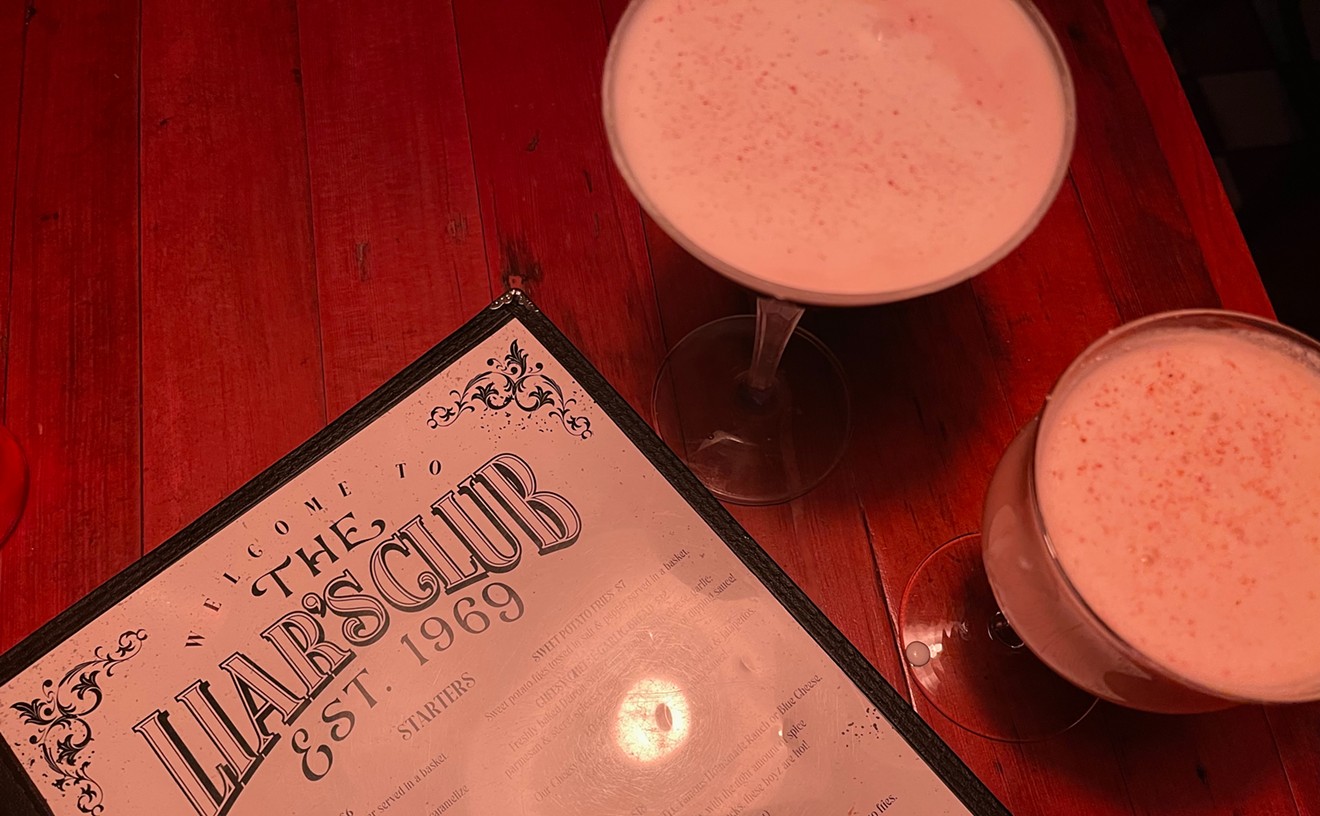Miu's Cuisine in Tempe is the fiery inner core of the Valley's Sichuan dining community, a mass of scarlet sauces, spicy meats, and dishes smacked with the tingling, numbing sensation of Sichuan peppercorns pulsating inside an outer layer of cold concrete.
Here, you'll find familiar and not-so-familiar dishes of this style of Chinese cuisine, from the Sichuan province in southwestern China, in abundance — but not in the often goopy, generic way you may have had them in the past. These are dishes of a decidedly different nature: unabashedly bold and fresh in flavor, expertly prepared, and liberal enough in their use of ingredients such as garlic, chile and Sichuan peppers, peanuts, ginger, and sesame paste to regularly deplete the stock of the nearest Asian market.
"I've seen how they do things in American Chinese restaurants," principal owner Bo Song says. "Basically, it's just corn starch and sugar. It's not good. It's not healthy. And it's prepared too fast. For real Chinese food, everything has to be prepared one or two days before."
At just 26, Song, along with partners and friends Jian Bo (22) and Tan Chang (19), set out to bring the authentic flavors of their native China to the Valley with a youthful slant that, Song says, many Chinese restaurants here lack. Appropriately calling it Miu's, for a Chinese word meaning changing the old style to the new, the three opened their restaurant in a former Eagles Hall on Apache Boulevard in January. The Tempe location, Song says, is perfect given the thousands of students from China attending ASU.
"Young people can accept the new concept that we're bringing," says Song, who also was part-owner of a Chinese-American restaurant in Tucson. "We invited many students here in the beginning to test the food and tell us if it tasted like home."
The menu consists of about 150 loosely described items — about 30 fewer without the Cantonese section. (At press time, Song was looking for a new Cantonese chef.) The selection of appetizers, chef specials, soups, and meat, vegetable, rice, and noodle dishes can be daunting; but since most run from the dutiful to the very delicious, odds are you won't go home dissatisfied. And it's a good idea to keep in mind that although many Sichuan dishes make good on their hot and numbing reputation, there are several that use little to no spices at all. Your best bet is to mix it up and enjoy.
You could begin with a stellar starter or two, perhaps very good dandan noodles — dense but tender noodles resting atop a spicy sauce and bits of crumbled pork; delicate, slithery wontons with their "arms" folded over bulging bellies of seasoned pork in a scarlet chile oil; and glassy, gelatinous bean thread noodles hiding within a deep red soup of chiles and vinegar. For fans of offal, there's a heap of cold slices of beef tripe in a spicy sauce and with enough tingly Sichuan peppers to numb your tongue for the rest of the day; and (even better) tender and fatty sliced cuts of pork belly marinated in an oily sauce of scallions, chiles, and garlic — lots and lots of garlic. For a refreshing bite with a kick: thick slices of cold, spicy cucumber.
There is a light and mellow West Lake beef chowder, a type of egg drop soup popular in the Zhejang Province on China's southeastern coast, silky-smooth and nuanced with cilantro, minced beef, and tofu. Equally good, but in a decidedly more spirited sense, is the hot-and-sour spiked with mushrooms, egg, tofu, and bamboo shoots that give it a nice texture.
Given the luscious, salty and savory bacon slices sautéed with leeks and deftly prepared twice-cooked pork, where boiled and stir-fried pieces of fatty and richly flavored pork belly mix with crunchy veggies, it's easy to stay on the swine-y side of Miu's protein-packed entrees. But then there's the aromatic, cumin-flavored beef mixed with onions, celery, and chili peppers to consider, in addition to the water-boiled fish that, despite its unfortunate moniker, is outstanding in flavor and combines the soft, soothing texture of the fish with bean sprouts, celery, and a stinging, Sichuan heat. Plus, there's a noteworthy ma po doufu, in which large cubes of soft tofu float in a lava-like sauce. All of the above are delicious.
And although you've probably had Kung Pao Chicken at other Valley restaurants, chances are it's nothing like Miu's. Piled high with bits of chicken doused in a light sauce along with fresh green onions, red chiles, Sichuan peppers, and slippery fried peanuts, it's richly flavorful and probably as close to the real deal here as you can get.
If you've brought along a few hungry friends, you could indulge in a Chongqing-style hot pot, a spicy, cauldron-like concoction of tender beef and fish with handfuls of chiles and Sichuan peppers in an oily soup served over a tiny, flickering flame, or Miu's Peking duck, which Song says takes four days to prepare. Tender with a dead-on crackly crust, ordering it "three ways" means the skin will be served with mantou (dense, steamed buns), hoisin, and thin slices of cucumber and scallions for duck sandwich fun; the carcass chopped and cooked for a cloudy, rich soup; and the meat shredded and mixed with crunchy, slivered vegetables for a stellar stir-fry.
And speaking of vegetables, don't go home without trying a few. There are tender sautéed green beans, braised pea sprouts kissed with garlic, and a heady stir-fried mix of several varieties of soft and earthy mushrooms and crunchy vegetables in a delicate sauce that's just about as good as any mushroom dish can get. And even if you're not a fan of eggplant (and especially if you are), you should order the Yu Xiang eggplant, where smoky and silky pieces of the dark purple vegetable laze in a hot, sour, and slightly sweet sauce for a balance of flavors that's pretty much perfect.
Miu's feels like the kind of place that could be here one day and gone the next. From the outside, the muted-green windowless building with a narrow drive leading to a dirt parking lot and entrance in the back can be difficult to find. And the large room — painted bright white, made brighter by fluorescent lights, and furnished with banquet room-style tables and chairs and a few bits of Chinese décor — could have been put together inside of a few hours. Even an extra space on the way to the restroom, packed with boxes, a couch, and a karaoke machine, looks as if someone may be moving in — or out.
"We have great food but we're in a crappy place," Song says. "We're working on it."
The interior may be a work in progress but, like the food, the experience of Miu's is an authentic one. There isn't a fork to be found, no fortune cookies served with the bill, and zero chitchat from the servers. And on a packed night, its youthful vibe — promoted by the three partners who visit tables in T-shirts, jeans, and (occasionally) flip-flops, Chinese pop music coming over the speakers, and lively groups of backpack-wearing, 20-something Chinese patrons — feels particularly electric.










